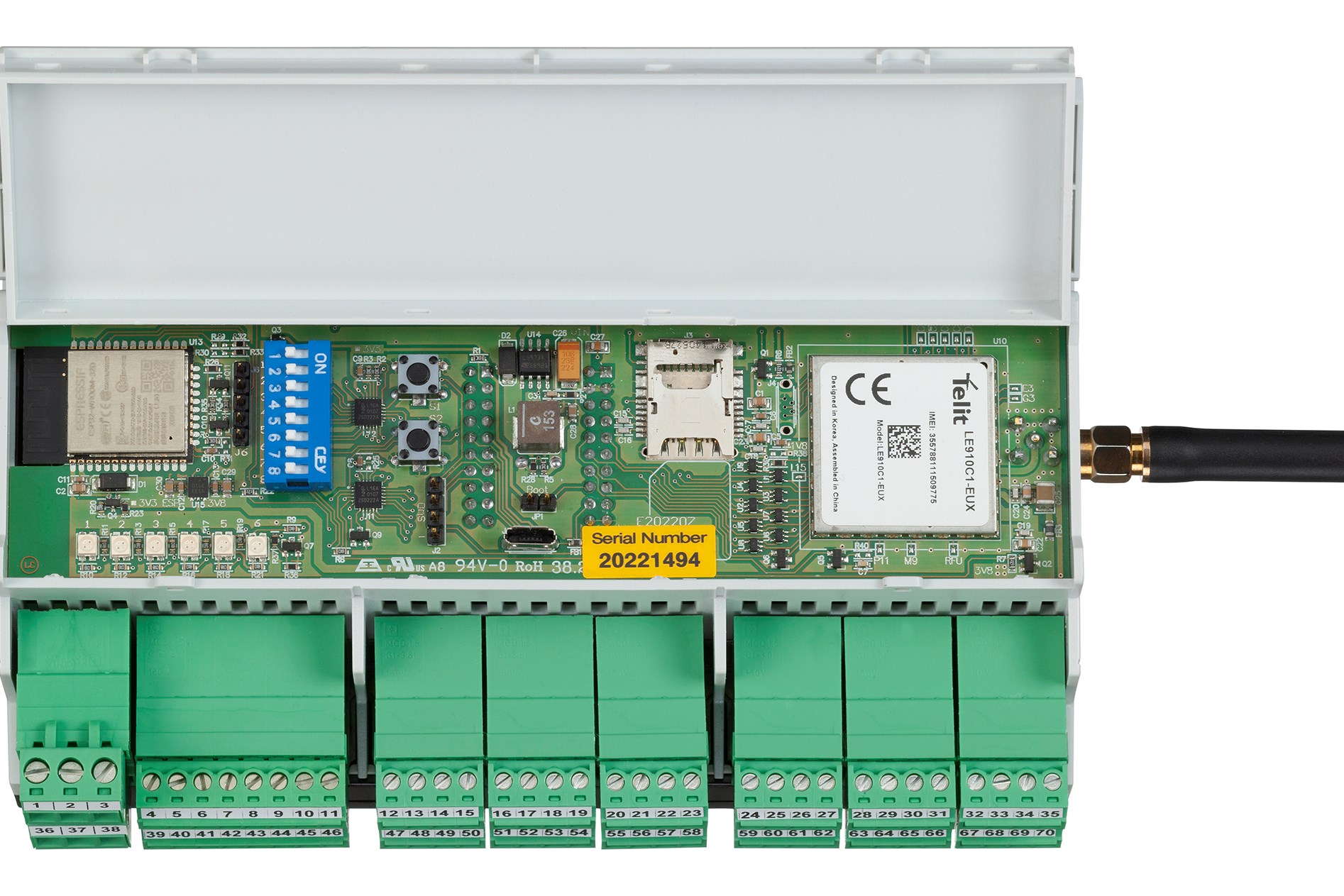- Operating voltage: 9-36V DC
- Power consumption: approx. 16mA ø (GPRS version)
- Interfaces: RS485, USB, Bluetooth, WLAN (Optional: RS232, SDI-12)
- Data transmission: integrated GPRS module or LoRa module
- 4 connections for Pt100 temperature sensors
- 2 sensor connections with 24V supply and adjustable analogue inputs:
0-10 V or 4-20 mA (e.g. wind speed or direction) - 2 sensor connections with 12V supply and adjustable analogue inputs:
0-10 V or 0-1 V (e.g. moisture or global radiation) - 1 leaf wetness sensor connection (BNF04)
- 3 digital inputs for recording switch positions (thermostat or pressure switch) or counting pulses (e.g. precipitation sensor)
- 4 analogue inputs (0-10V or 0÷5V), which alternatively can also be used as additional digital inputs
- 2 additional sensor connections (AUX1 and AUX2) which can be individually adapted to the sensor to be connected with internally exchangeable plug-in cards. (e.g. more temperature and leaf wetness sensors or other new, as yet unknown, probes and sensors)
- 1 connection for the BNF40-S ground moisture sensor with RS485 interface 12V supply
- 3 digital outputs: a relay contact (N/O contact 6A 230 V) and 2 transistor outputs (Open collector, max. 50mA can also be used as a relay driver)
- Connection: pluggable screw terminal
- Assembly: DIN NS32 or NS35 mounting rail
- Dimensions (with antenna): 221×103×60mm (L×B×H)
With GPRS Module Part No.: 48-48-249
With LoRa Module Part No.: 48-48-252




